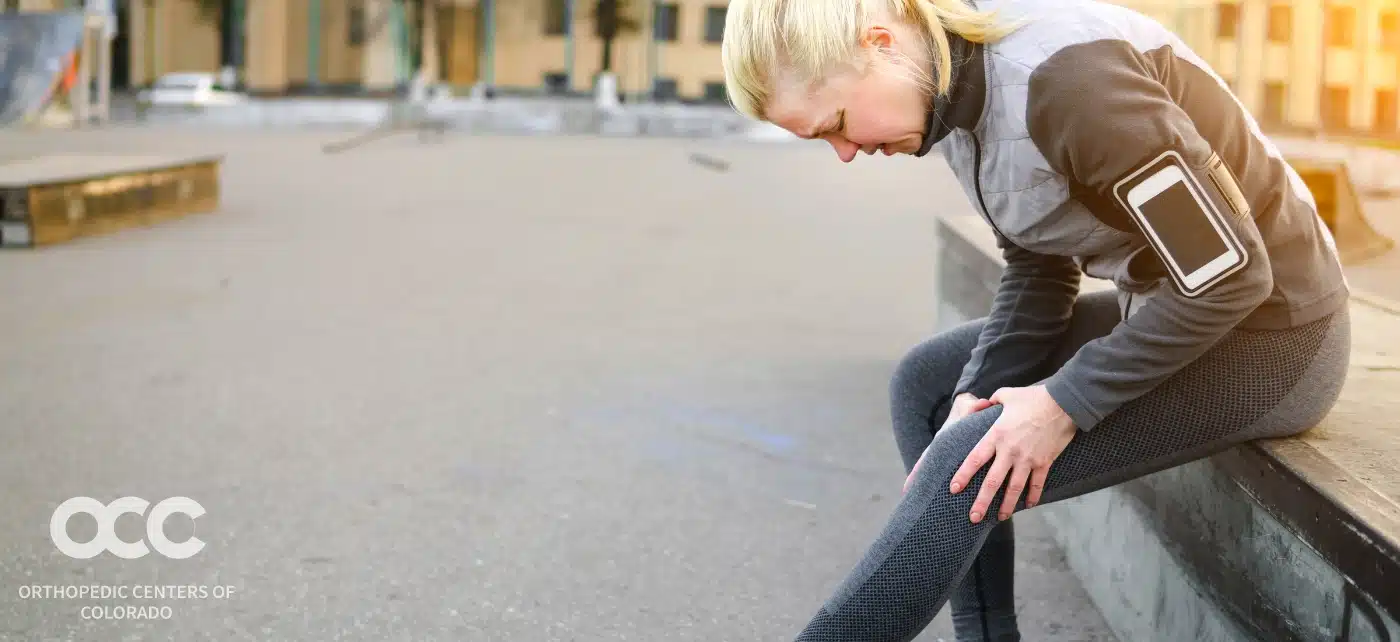The quadriceps tendon is a durable piece of tissue that helps straighten the leg. A quadriceps tendon tear is a painful condition that makes this activity difficult. This makes it difficult to walk. As a result, it can greatly limit the daily activities you need to function. The place to get the most accurate diagnosis of a quadriceps tendon tear is to consult with the best orthopedic specialist. This means the place to start is with a consultation at Advanced Orthopedics in Denver, Parker, or Aurora, Colorado. You can trust you’ll get the very best treatment.
OVERVIEW
Quadriceps tendon tears are not common. They most often occur among middle-aged people who are runners or play sports that involve jumping. One might experience a partial tearing of the tendon or a complete tear. Either way, a torn quadriceps tendon is a painful, limiting injury.
QUADRICEPS TENDON ANATOMY
The quadriceps are a large muscle group located in the top front of the leg. There are four muscles in the quadriceps group which meet just above the kneecap (patella) to form the quadriceps tendon. The quadriceps tendon attaches the quadriceps muscles to the patella. The patella is attached to the shinbone (tibia) by the patellar tendon. The quadriceps muscles, quadriceps tendon, and patellar tendon all work together to form strong, functional leg muscles that enable it to straighten.
WHAT ARE QUADRICEPS TENDON TEARS?
A quadriceps tendon tear occurs when the tendon that holds the patella (knee cap) to the thigh muscle in the knee tears and splits apart, allowing the patella to slide downward. There are two different types of tears.
- Partial tears. Many tears do not completely disrupt the tendon. This is similar to a rope stretched so far that some of the fibers are frayed, but the rope is still in one place.
- Complete tears. As its name suggests, a complete tear will split the soft tissue into two pieces, or the tendon will completely separate from the bone.
CAUSES
A quadriceps tear often occurs when there is a heavy load on the leg with the foot planted and the knee partially bent. Think of an awkward landing from a jump while playing basketball. The force of the landing is too much for the tendon and tears. Tears can also be caused by falls, direct force to the front of the knee, and lacerations (cuts). A weakened quadriceps tendon is more likely to tear. Several things can lead to tendon weakness, such as tendinitis, which is inflammation of the quadriceps tendon. Chronic diseases can weaken tendons by disrupting the blood supply. These chronic diseases include:
- Chronic renal (kidney) failure
- Hyperparathyroidism
- Gout
- Leukemia
- Rheumatoid arthritis
- Diabetes mellitus
- Infections
- Metabolic disease
- Steroid use—Using corticosteroids has been linked to increased muscle and tendon weakness
- Fluoroquinolones—this special type of antibiotic has been associated with quadriceps tendon tears
SYMPTOMS
Tearing the quadriceps tendon is a painful experience. One might first hear a popping sound and experience a surge of pain. A sensation of ripping or tearing is also common. This is followed by:
- Swelling around the knee and lower quadriceps area
- Reduced movement in the affected leg and knee
- Tenderness around the knee
- Sagging of the kneecap
- Bruising
- Difficulty walking or putting pressure on the knee
NON-SURGICAL TREATMENTS
A surgeon will determine a treatment plan based on the degree of your quadriceps tear. The R.I.C.E. method can be used for immediate management– Rest, Ice, Compression, and Elevation. The doctor may recommend wearing a knee immobilizer or brace. Crutches will help avoid putting all weight on your leg. Once the initial pain and swelling have settled down, physical therapy with specific exercises can restore the strength and range of motion in the leg. These exercises will continue to adapt to the healing process.
WHEN IS SURGERY INDICATED?
In the case of complete tears, surgery is almost always needed. If there is a large partial tear or a tear associated with tendon degeneration, the doctor may also recommend surgery. The type of surgery will likely depend on age, activities, and previous level of function. Early repair may prevent the tendon from scarring and tightening into a shortened position. Surgical repair may help reattach the torn tendon to the top of the kneecap. The sooner surgery is completed, the better the chances of making a full recovery.
GETTING THE RIGHT DIAGNOSIS. GETTING THE RIGHT DOCTOR
The most important factor in determining your quadriceps tendon repair recovery time and healing is how quickly you receive not just treatment but the right treatment. Treatment that will, with time, help you achieve a full recovery and full use of your leg. You can trust you’ll get that treatment from the highly professional and skilled orthopedic specialists at Advanced Orthopedics in Denver, Parker, or Arora, Colorado. Complete tears can often be identified with X-rays alone. If necessary, your surgeon might order an MRI scan. If you are a competitive athlete, it is important to work closely with your physician to determine when you can return to sports. If you return too quickly, you are at a higher risk of re-injuring the area. In every way possible, from diagnosis through healing, at Advanced Orthopedics, you can trust you will be treated with care. Schedule an appointment today.

















